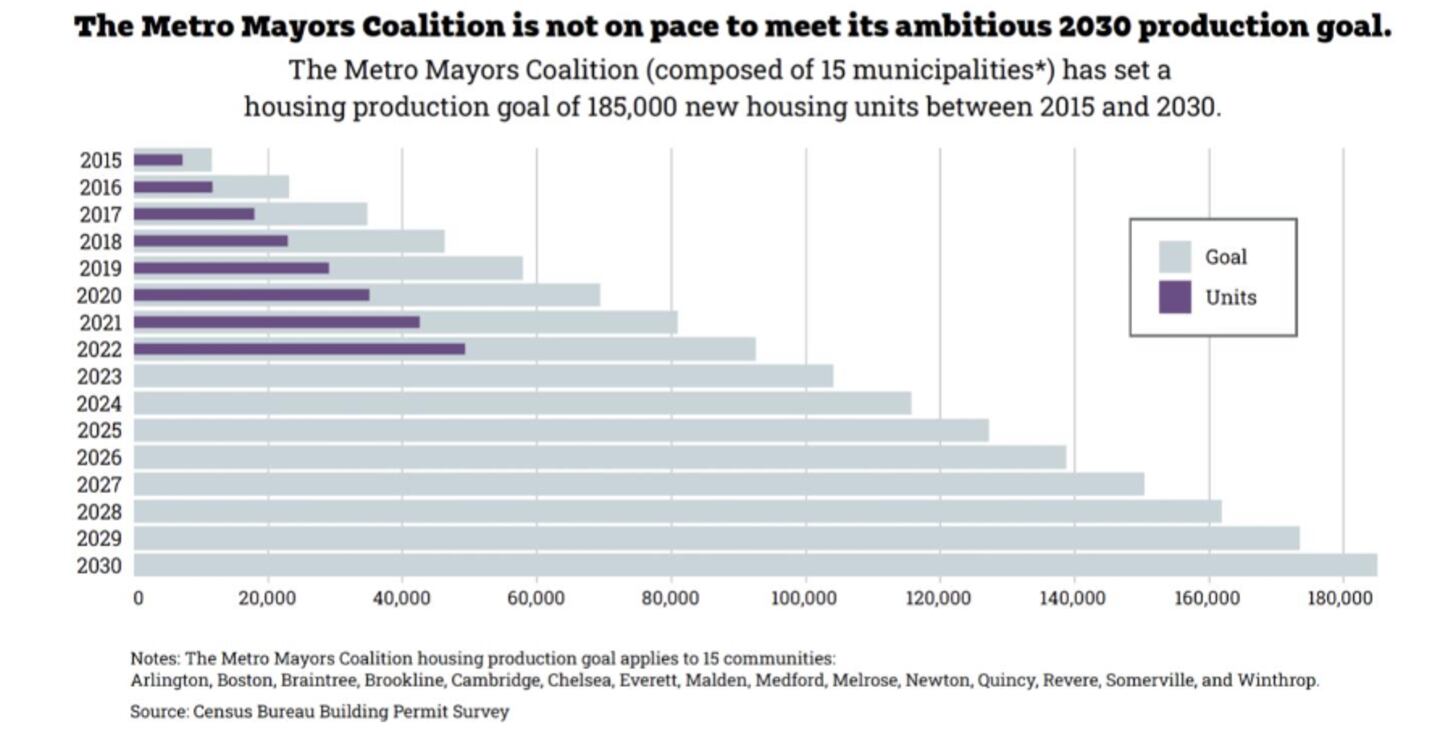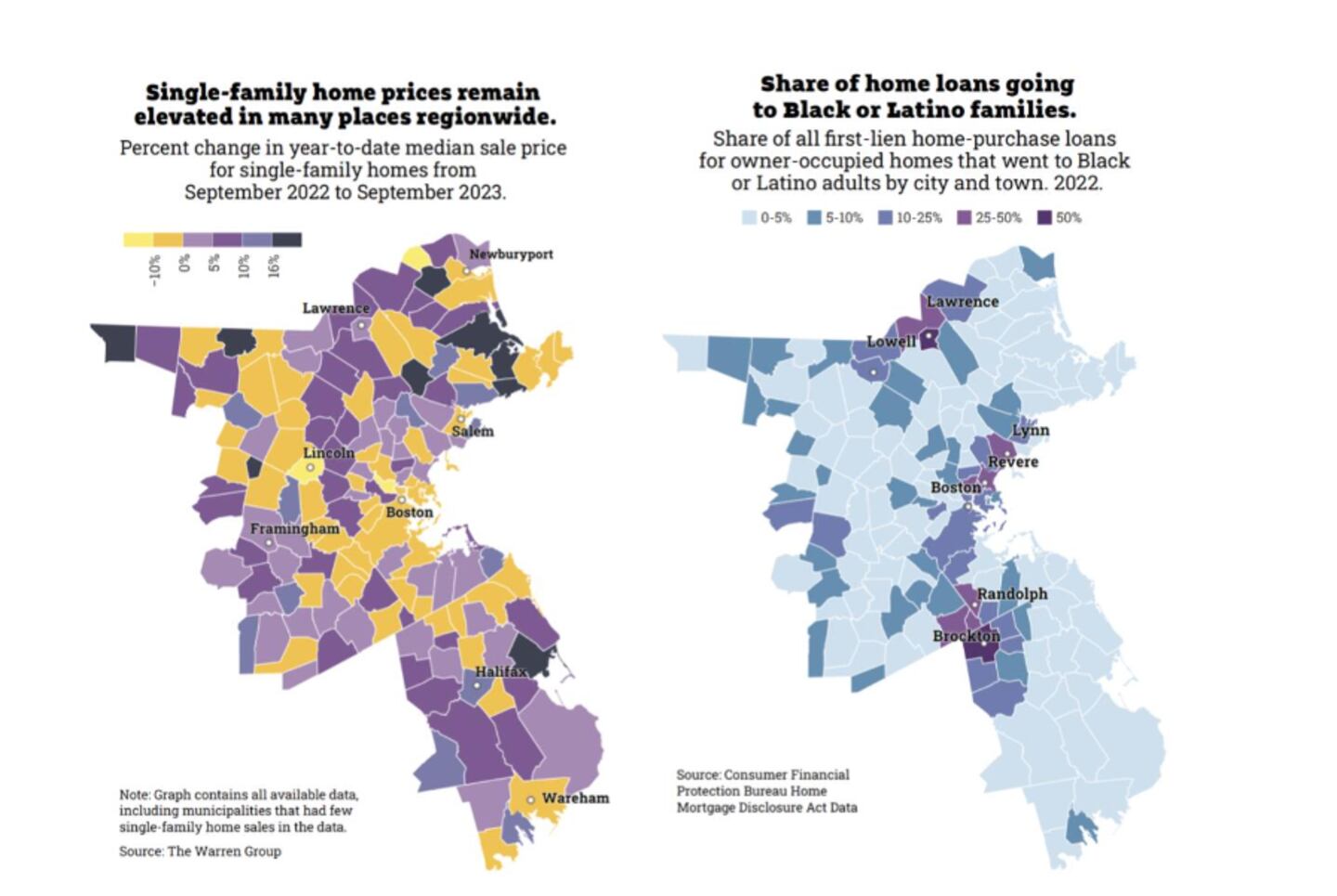BOSTON — Greater Boston continues to struggle with tight inventory, rising costs and a lack of affordable housing, but new policy efforts and innovation offer at least a glimmer of hope in the 2023 Greater Boston Housing Report Card, which was released by the Boston Foundation on Tuesday.
The report card comprises three parts: a look at the current state of the market by Luc Schuster, Peter Ciurczak and Aja Kennedy at Boston Indicators; a special analysis of community land trusts by Penn Loh, Chelsey Gao and Johnny Shively of the Department of Urban & Environmental Policy & Planning at Tufts University; and a selection of interactive data and charts available alongside the report.
“The past year has unfortunately offered more of the all-too-familiar story of high prices, low vacancy rates, and systems and regulations that are keeping thousands of homeseekers – particularly non-White families – from accessing affordable rental housing and homeownership opportunities,” M. Lee Pelton, president and CEO of the Boston Foundation, said in a statement. “Simply put, until we address many of these issues, we will continue to struggle to close racial wealth gaps, to the detriment of our entire region.”
Admirable goals – but a region falling short
The first half of the report, from Boston Indicators, examines the state of the current housing market and the factors that are driving costs for renters and homebuyers in Greater Boston across five different suburban and urban community types.
Once again, however, the report finds the region falling behind in its efforts to meet regional and state housing goals.
The research finds that through 2022, the 15 communities of the Metro Mayors Coalition have built barely half the 90,000 units of housing needed to keep pace with an ambitious goal of 180,000 new units by 2030, in part because of sharply higher production costs.
As a result, Boston’s vacancy rates remain chronically behind those in other cities, and rents and home prices have risen well above pre-COVID levels, the report found.
Overall, inventory has tightened even further, with sales of single-family homes sharply lower in communities throughout the region, the report found.
Despite other changes in the marketplace, the racial distribution of home purchases closely mirroring existing patterns of residential segregation.
Home loan data show that with few exceptions – cities such as Lawrence, Brockton and Randolph – Black and Latino homebuyers receive a far smaller share of home loans than their percentage of the population, the report found.
Housing cost burdens continue to grow
For renters and owners, the rising cost of housing has increased most sharply relative to wages for lower-income households, adding to housing cost burdens, the report found.
Around 49 percent of Greater Boston renters (and 25 percent of homeowners) pay more than 30 percent of their income on housing expenses, and more than one-in-four renters pay over half their monthly income for housing, the report found.
“Perhaps unsurprisingly, Black and Latino owners and renters are more likely to be cost-burdened across all types of communities,” the Boston Foundation said in a statement.
To track how the state and region are responding to the ongoing issue of housing access and affordability, this year’s report card featured its first-ever state policy roundup, officials said.
The report found that there has been progress at the state level in recent years, including passage of the MBTA Communities upzoning law to expand the number of affordable units permitted near transit, as well as a host of COVID-related policies, including an eviction moratorium, dramatically expanded rental supports, and innovations like MassDREAMS, a down-payment assistance program which was funded through the use of temporary funding provided by the federal American Rescue Plan Act (ARPA).
And in October, the Healey Administration released its $4 billion Housing Bond Bill, which proposes large new housing investments paired with a range of zoning reform and other proposals to address the state’s housing crisis.
Parts of the bond bill face an uncertain fate in the Legislature, and state officials are seeing a growing pushback in many communities to the MBTA Communities effort.
Community Land Trusts: A tool for housing justice
The report ends with a special analysis of Community Land Trusts (CLTs) as a possible contributor to a healthier housing landscape in Greater Boston.
CLTs, as they are known, are nonprofit organizations that purchase or secure land and then work with the community to determine its best use. The CLT can then lease the land to users for affordable housing or other purposes.
More than 300 CLTs are in place around the U.S., including seven in Greater Boston. Those seven CLTs are using their properties for 300 current and future units of affordable housing, as well as gardens, open space and urban farmland.
“The research team finds that CLTs have demonstrated long-term success in providing stable affordable housing, building community and generating wealth for CLT-supported homeowners, but also face a number of challenges, including ability to access capital and land with which to scale, a need to build broader awareness and organizational capacity, and the challenges of accessing and navigating processes designed to encourage private developers to create affordable housing, according to The Boston Foundation.
The 2023 Greater Boston Housing Report Card is available for download here. The website also features interactive charts and a downloadable data file that includes city- and town-level data from dozens of Greater Boston communities.
This is a developing story. Check back for updates as more information becomes available.
Download the FREE Boston 25 News app for breaking news alerts.
Follow Boston 25 News on Facebook and Twitter. | Watch Boston 25 News NOW
©2023 Cox Media Group









